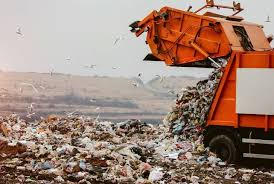As a part of human life, solid wastes are generated. The disposal of solid waste should be part of an integrated solid waste management system. The method of collection, transportation, processing, resource recovery and final disposal should be synchronized for effective implementation.
This will help in having a clean and healthy environment devoid of diseases. The industries are institutions that generate huge industrial wastes which deserve to be managed at the level of the industry.
Waste Management
Waste management is the collection, transport, processing, or disposal, managing and monitoring of waste materials. The term usually relates to materials produced by human activity, and the process is generally undertaken to reduce their effect on health, the environment or aesthetics.
Waste management is a distinct practice from resource recovery which focuses on delaying the rate of consumption of natural resources. All wastes materials, whether they are solid, liquid, gaseous, or radioactive fall within the remit of waste management.
Waste management practices can differ for developed and developing nations for urban and rural areas, and for residential and industrial producers.
Read Also: Definition and Concept of Pollution Abatement and Control
Management for non-hazardous waste residential and institutional waste in metropolitan areas is usually the responsibility of local government authorities, while management for non-hazardous commercial and industrial waste is usually the responsibility of the generator subject to local, national or international controls.
Solid wastes are generated due to human as well as industrial activities. These wastes are to be collected, transported to the site and treated properly. This is very essential as the environments are to be kept clean. The main sources for solid wastes are domestic, commercial, industrial, municipal and agricultural wastes.
The composition of a city waste is as follows:
Paper, wood, cardboard – 53%
Garbage – 22%
Ceramics, glass, crockery – 10%
Metals – 8%
Rubber, plastics, discarded textiles – 7%.
Waste Management Concepts

There are a number of concepts about waste management which vary in their usage between countries or regions. Some of the most general, widely used concepts include:
Waste hierarchy – The waste hierarchy refers to the “3 Rs” reduce, reuse and recycle, which classify waste management strategies according to their desirability in terms of waste minimization.
The waste hierarchy remains the cornerstone of most waste minimization strategies. The aim of the waste hierarchy is to extract the maximum practical benefits from products and to generate the minimum amount of waste.
Polluter pays principle – the Polluter Pays Principle is a principle where the polluting party pays for the impact caused to the environment. With respect to waste management, this generally refers to the requirement for a waste generator to pay for appropriate disposal of the unrecoverable material.
Effects of Waste Pollution
1. Health hazards
If solid wastes are not collected and allowed to accumulate, they may create unsanitary conditions. This may lead to epidemic outbreaks of diseases. Many diseases like cholera, diarrhoea, dysentery, plague, jaundice, or gastrointestinal diseases may spread and cause loss of human lives.
In addition, improper handling of the solid wastes is a health hazard for the workers who come in direct contact with the wastes.
2. Environmental impact
If the solid wastes are not treated properly, decomposition and putrefaction may take place, causing land and water pollution when the waste products percolate down into the underground resources.
The organic solid waste during decomposition may generate obnoxious odour. Stray dogs and birds may sometimes invade garbage heaps and may spread it over the neighbourhood causing unhygienic and unhealthy surroundings.
Control Measures
The main purpose of solid waste management is to minimize the adverse effects on the environment. The steps involved are:
– Collection of solid wastes
– Disposal of solid wastes
– Utilization of wastes.
1. Collection of Solid Wastes
Collection of wastes includes gathering the waste, transporting to the centralized location, and then moving it to the site of disposal.
The collected waste is then separated into hazardous and non-hazardous materials. There are a number of waste separation technologies available such as air stripping, stream stripping, carbon absorption and precipitation.
Read Also: Industrial Methods for Pollution Control
2. Disposal of Solid Wastes
Before the final disposal of the solid wastes, it is processed to recover the useable resources and to improve the efficiency of the solid waste disposal system. The main processing technologies are compaction, incineration and manual separation.
The appropriate solid waste disposal method has to be selected keeping in view the following objectives:
– Should be economically viable should not create a health hazard
– Should not cause adverse environmental effects should not result in unpleasant sight, odor and noise.
3. Utilization of Wastes
Solid wastes can be properly utilized to reap benefits such as:
– Conservation of natural resources
– Economic development
– Generate many useful products
– Employment opportunities
– Control of air pollution.

